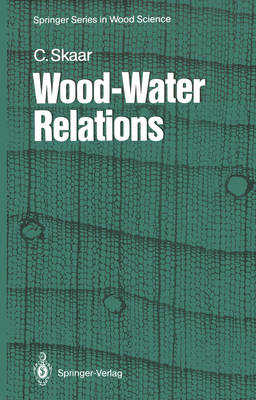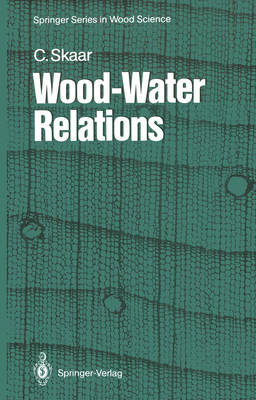
En raison d'une grêve chez bpost, votre commande pourrait être retardée. Vous avez besoin d’un livre rapidement ? Nos magasins vous accueillent à bras ouverts !
- Retrait gratuit dans votre magasin Club
- 7.000.000 titres dans notre catalogue
- Payer en toute sécurité
- Toujours un magasin près de chez vous
En raison de la grêve chez bpost, votre commande pourrait être retardée. Vous avez besoin d’un livre rapidement ? Nos magasins vous accueillent à bras ouverts !
- Retrait gratuit dans votre magasin Club
- 7.000.0000 titres dans notre catalogue
- Payer en toute sécurité
- Toujours un magasin près de chez vous
Description
Wood is formed in an essentially water-saturated environment in the living tree, and the cell wall remains in this state until the water flow from the roots is interrupted, such as by felling the tree. The wood then begins to lose most of its moisture by drying, resulting in changes in most of its physical properties. These changes, and their relationship to the environment to which the wood is subsequently ex- posed, are the subject of this book. The text consists of six chapters. The first chapter discusses cer- tain empirical relationships between wood and water, methods of measuring wood moisture content, factors which affect its equilib- rium moisture content, and the effect of moisture content on wood strength. The second chapter treats the thermodynamics of moisture sorption by wood, inc1uding enthalpy, entropy, and free energy changes. The third chapter discusses some of the theories which have been proposed to explain the sorption isotherms for hygroscopic ma- terials such aswood. Chapter 4 considers hygroexpansion or the shrinking and swelling of wood associated with moisture change. Chapter 5 is concerned with how moisture moves through the cell wall of wood in response to both moisture and temperature gradients. The sixth and final chapter discusses the theoretical and practical aspects of the electrical resistance and dielectric properties of wood, in- c1uding the principles involved in their application in electrical moisture meters.
Spécifications
Parties prenantes
- Auteur(s) :
- Editeur:
Contenu
- Nombre de pages :
- 283
- Langue:
- Anglais
- Collection :
Caractéristiques
- EAN:
- 9783642736858
- Date de parution :
- 06-12-11
- Format:
- Livre broché
- Format numérique:
- Trade paperback (VS)
- Dimensions :
- 156 mm x 244 mm
- Poids :
- 472 g

Les avis
Nous publions uniquement les avis qui respectent les conditions requises. Consultez nos conditions pour les avis.






